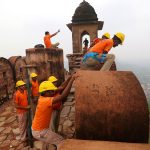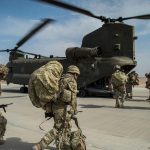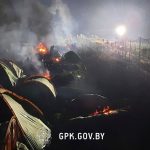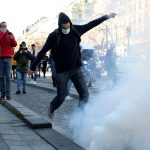An investigation into the fatal shooting of a Palestinian man whose car hit a checkpoint has raised questions about the Israeli authorities’ version of events and put renewed focus on Israel’s tactics and procedures in the occupied West Bank.
Ahmad Erekat, 26, a cousin of Palestinian diplomat and negotiator Saeb Erekat, was shot by border police seconds after his car hit an Israeli checkpoint between Jerusalem and Bethlehem on 23 June 2020.
Security camera footage, released at the time by the Israeli authorities, showed his car approaching the checkpoint before veering abruptly to the right. It hit a group of police officers. Remarkably, only one officer was lightly wounded.
The video showed him exiting the car and walking backwards with his arms raised as he is shot several times.
The investigation by Forensic Architecture, a London-based research agency specialising in human rights violations, has concluded that Mr Erekat:
To date, the Israeli authorities have not handed over Mr Erekat’s body for burial and have not released details of their own investigation.
Mr Erekat’s family have always insisted he was running errands ahead of his sister’s wedding that was to take place later the same day and that he lost control of the car.
The authorities say the incident was an intentional ramming attack which are quite regular at checkpoints across the West Bank.
Just one CCTV video of the incident was released, but investigators at Forensic Architecture gathered numerous other videos from witnesses.
With the help of a forensic collision expert, they concluded that, contrary to the authorities’ assertion the vehicle accelerated into the checkpoint, it maintained a constant speed until just before the impact.
Their video analysis from different camera angles showed evidence suggesting that Mr Erekat might have braked at the last moment.
Mr Erekat was shot after he exited the car and backed away with his hands in the air. The military maintains the context of regular ramming attacks and his behaviour as he exited the car gave the border police reason to believe they were in immediate life threatening danger.
Through further video analysis, the investigators were able to conclude that no first aid was provided to Mr Erekat despite clear signs that he was still alive.
A Palestinian ambulance which arrived at the scene was denied access.
An hour-and-a-half after he was shot, Mr Erekat’s body, which had been stripped naked, was removed by the authorities.
The investigators said: “His body was treated in an inhuman and degrading manner and later seized by the army to deny him a proper burial-an act of collective punishment. To date, the Israeli army has not opened an investigation into Erekat’s crash and continues to withhold most of the evidence.”
Mr Erekat’s body is one of more than 50 currently being held by the Israeli authorities. All are Palestinians killed over recent years while allegedly committing acts of terror.
Saeb Erekat, the veteran Palestinian peace negotiator, led a very public call for the release of his cousin’s body until his own death from coronavirus in November.
The Forensic Architecture investigation was supported by Al Haq, a Palestinian Human Rights group. Israel claims that its director, Shawan Jabarin, has links to the PFLP, internationally recognised as terrorist organisation.
Sky News put the conclusions of the Forensic Architecture investigation to the Israeli authorities.
In a joint statement, the Israeli Defence Forces and the police said: “From the evidence collected, it was established beyond doubt that those present at the scene were certain that they were in immediate life-threatening danger, and that this was an assailant who had carried out a deliberate attack.”
“Contrary to allegations, Erekat was examined at the scene of the incident by medical personnel a few minutes following the attack, and was found to have no pulse or breathing, and therefore no resuscitation procedures were performed on the spot, and his death was pronounced accordingly. During the entire incident there was no degrading treatment or infringement of the dignity of the deceased.”
“The issue of holding the terrorist’s body is in legal proceedings in the High Court, so we will not be able to elaborate further at this time.”






















